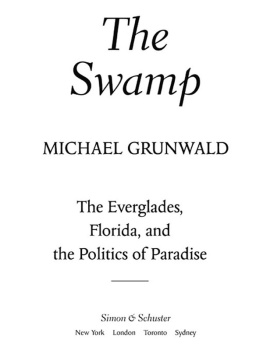Chris Wilhelm - From Swamp to Wetland: The Creation of Everglades National Park
Here you can read online Chris Wilhelm - From Swamp to Wetland: The Creation of Everglades National Park full text of the book (entire story) in english for free. Download pdf and epub, get meaning, cover and reviews about this ebook. City: Athens, year: 2022, publisher: University of Georgia Press, genre: History / Science. Description of the work, (preface) as well as reviews are available. Best literature library LitArk.com created for fans of good reading and offers a wide selection of genres:
Romance novel
Science fiction
Adventure
Detective
Science
History
Home and family
Prose
Art
Politics
Computer
Non-fiction
Religion
Business
Children
Humor
Choose a favorite category and find really read worthwhile books. Enjoy immersion in the world of imagination, feel the emotions of the characters or learn something new for yourself, make an fascinating discovery.
- Book:From Swamp to Wetland: The Creation of Everglades National Park
- Author:
- Publisher:University of Georgia Press
- Genre:
- Year:2022
- City:Athens
- Rating:5 / 5
- Favourites:Add to favourites
- Your mark:
From Swamp to Wetland: The Creation of Everglades National Park: summary, description and annotation
We offer to read an annotation, description, summary or preface (depends on what the author of the book "From Swamp to Wetland: The Creation of Everglades National Park" wrote himself). If you haven't found the necessary information about the book — write in the comments, we will try to find it.
This book chronicles the creation of Everglades National Park, the largest subtropical wilderness in the United States. This effort, which spanned 1928 to 1958, was of central importance to the later emergence of modern environmentalism. Prior to the parks creation, the Everglades was seen as a reviled and useless swamp, unfit for typical recreational or development projects. The regions unusual makeup also made it an unlikely candidate to become a national park, as it had none of the sweeping scenic vistas or geological monuments found in other nationally protected areas.
Park advocates drew on new ideas concerning the value of biota and ecology, the importance of wilderness, and the need to protect habitats, marine ecosystems, and plant life to redefine the Everglades. Using these ideas, the Everglades began to be recognized as an ecologically valuable and fragile wetlandand thus a region in need of protective status.
While these new ideas foreshadowed the later emergence of modern environmentalism, tourism and the economic desires of Floridas business and political elites also impacted the parks future. These groups saw the Everglades unique biology and ecology as a foundation on which to build a tourism empire. They connected the Everglades to Floridas modernization and commercialization, hoping the park would help facilitate the states transformation into the Sunshine State. Political conservatives welcomed federal power into Florida so long as it brought economic growth.
Yet, even after the parks creation, conservative landowners successfully fought to limit the park and saw it as a threat to their own economic freedoms. Today, a series of levees on the parks eastern border marks the line between urban and protected areas, but development into these areas threatens the park system. Rising sea levels caused by global warming are another threat to the future of the park. The battle to save the swamps biodiversity continues, and Everglades Park stands at the center of ongoing restoration efforts.
Chris Wilhelm: author's other books
Who wrote From Swamp to Wetland: The Creation of Everglades National Park? Find out the surname, the name of the author of the book and a list of all author's works by series.








